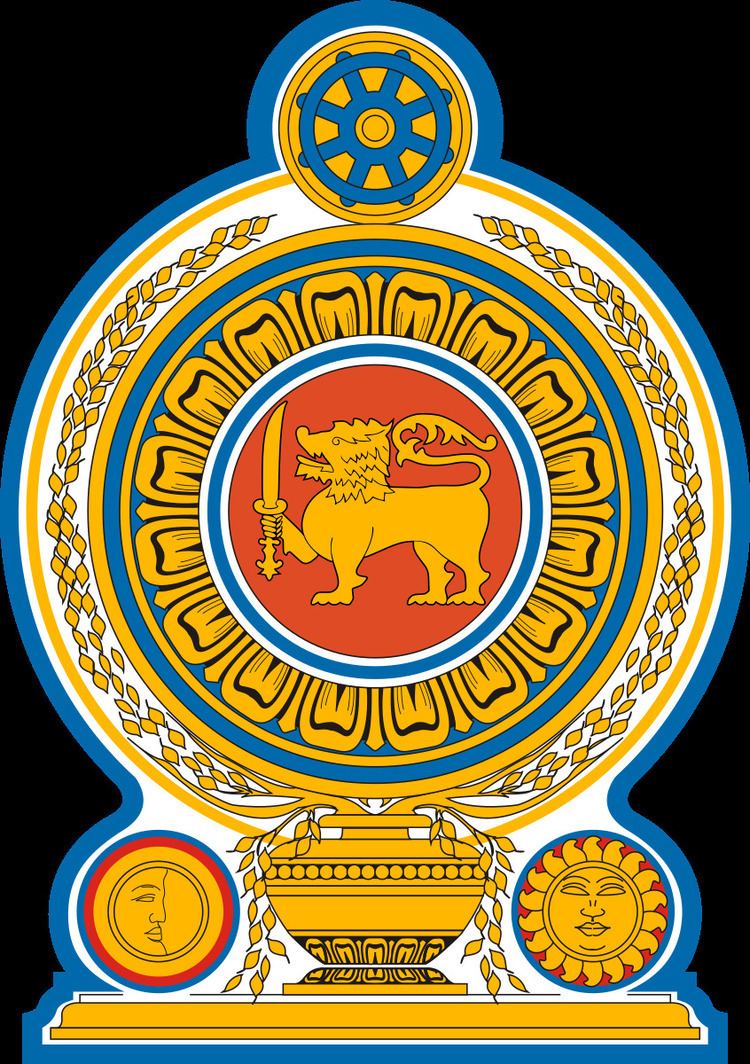 | ||
The Constitution of the Democratic Socialist Republic of Sri Lanka has been the constitution of the island nation of Sri Lanka since its original promulgation by the National State Assembly on 7 September 1978. As of May 2015 it has been formally amended 19 times.
Contents
It is Sri Lanka's second republican constitution, replacing the Sri Lankan Constitution of 1972, and its third constitution since the country received autonomy within the British Commonwealth as the Dominion of Ceylon in 1948.
The constitution in Sri Lanka
Under the Soulbury Constitution which consisted of The Ceylon Independence Act, 1947 and The Ceylon (Constitution and Independence) Orders in Council 1947, Sri Lanka was then known as Ceylon. The Soulbury Constitution provided a parliamentary form of Government for Ceylon and for a Judicial Service Commission and a Public Service Commission. Minority rights were safeguarded by Article 29(2) of the Constitution.. The Governor-General (The Representative of the Monarch of Ceylon who was also the Monarch of the United Kingdom ), the Senate and the House of Representatives exercised legislative power. The House of Representatives consisted of 101 Members, of which 95 were elected by universal suffrage and 6 were nominated by the Governor-General. That total number was increased to 151 by the 1959 Delimitation Commission and the term of the House was 5 years The S. W. R. D. Bandaranaike Government set up a Joint Select Committee of the Senate and the House of Representatives to consider a revision of the Constitution on 10 January 1958 but the Committee was unable to come to a final conclusion on account of the propegation of Parliament on 23 May 1959. A similar attempt by the Dudley Senanayake Government was failed due to such a propegation on 22 June 1968 too. The Senate consisted of 30 Members (elected 15 by the House and 15 by the Governor -General) was abolished on 2 October 1971.
Sirimavo Bandaranaike came to office as the world's first Woman Prime Minister in May 1970. Her United Front Government used the parliament as a Constituent Assembly and drafted a new Republican Constitution. It was promulgated on 22 May 1972. This Constitution provided for a unicameral legislature named the National State Assembly with a term of office of 6 years and Sovereignty was entirely vested in it. A nominal President with a term of office of 4 years was appointed as the Head of State by the Prime Minister, Head of the Cabinet of Ministers responsible to the National State assembly. Ceylon was replaced by republic of Sri Lanka (Resplendent Island). this constitution contained a declaration of fundamental rights and freedom was amended on 11 February 1 975 to change the basis of delimitation of constituencies from 75,000 persons per electorate to 90,000 persons. J. R. Jayewardene who came to office in July 1977 with a five-sixths majority passed the second amendment to the 1972 Constitution on 4 October 1977 and then Prime Minister Jayawardene became the first Executive President of Sri Lanka on 4 February 1978.
Background
Before the 1977 general election the UNP had sought a mandate from the people to adopt a new constitution. Accordingly a select committee was appointed to consider the revision of the existing Constitution.
The new Constitution, promulgated on 7 September 1978, provided for a unicameral parliament and an Executive President. The term of office of the president and the duration of parliament were both set at six years. The new Constitution also introduced a form of multi-member proportional representation for elections to parliament, which was to consist of 196 members (subsequently increased to 225 by the Fourteenth Amendment to the Constitution).
The Constitution provided for an independent judiciary and guaranteed fundamental rights, providing for any aggrieved person to invoke the Supreme Court for any violation of his or her fundamental rights. The Constitution also provided for a Parliamentary Commissioner for Administration (Ombudsman) who could investigate public grievances against government institutions and state officers and give redress. It also introduced anti-defection laws, and referendums on certain bills and on issues of national importance.
Provisions for amendment
Most provisions of the Constitution of Sri Lanka can be amended by a two-thirds majority in parliament. However, the amendment of certain basic features such as the clauses on language, religion, and reference to Sri Lanka as a unitary state require both a two-thirds majority and approval at a nationwide referendum.
